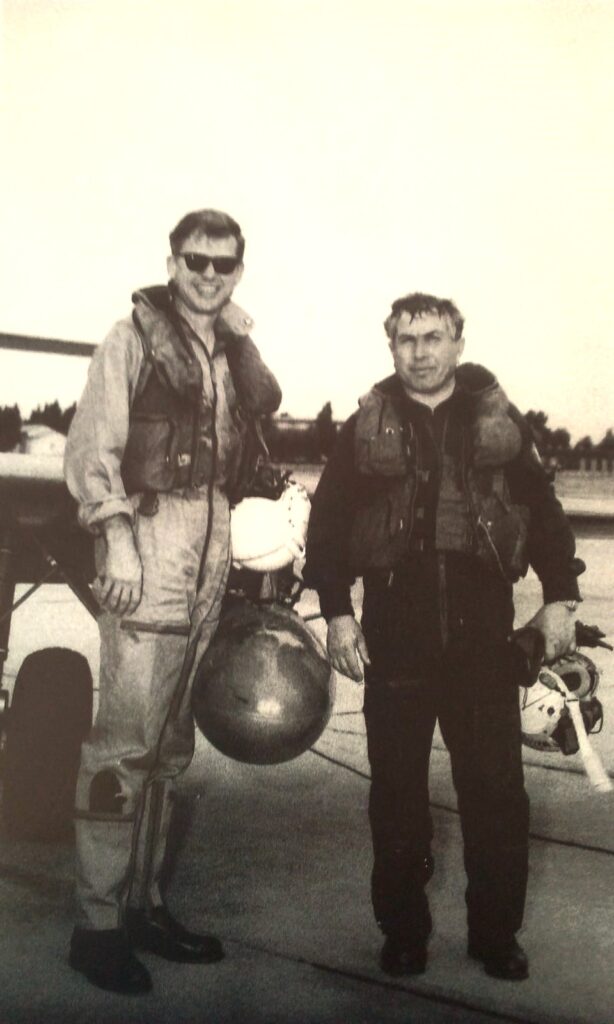HISTORY OF THE G91T/1
Gigi Iacomino

The FIAT G.91, designed by Eng. Inspired by the experience gained with the North American F86K license by the Turin-based company, Giuseppe Gabrielli was born following a specification issued by NATO in 1953 for a light fighter-bomber capable of taking off from semi-prepared runways and intended to be adopted by various European nations. The first prototype flew in August 1956, and brilliantly passed the assessment against the other competitors, being declared the winner. While the Air Force placed a first order for 23 pre-series aircraft, the aircraft was assessed by the aviation forces of several countries that are members of the Atlantic Alliance, including Greece, West Germany, Turkey, Portugal and the United States Army. Despite the interest shown, in addition to Italy, the aircraft was ordered only by West Germany which subsequently sold some specimens to Portugal (the only nation to use this aircraft in war action from 1966 to 1973 in counter-guerrilla operations in Portuguese Guinea and in Mozambique).
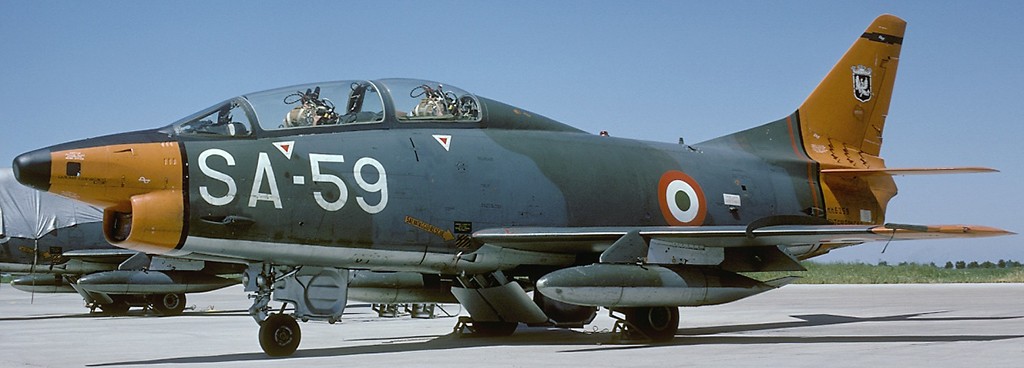
FIAT G91T/1 della Scuola Volo Basico Avanzato Aviogetti ( Coll. Gigi Iacomino )


FIAT G91T/3 della Luftwaffe
( Coll. Gigi Iacomino )
FIAT G 91T/3 Forca Aérea Portuguesa
( Coll. Gigi Iacomino )
Despite the small number of user nations, the aircraft remained in production for 19 years. A total of 756 copies were made, including prototypes and pre-production models. In Italy the G.91 was made in different versions that went from P.A.N to Y, and also included the G.91T / 1 version, whose first flight took place on May 31, 1960.
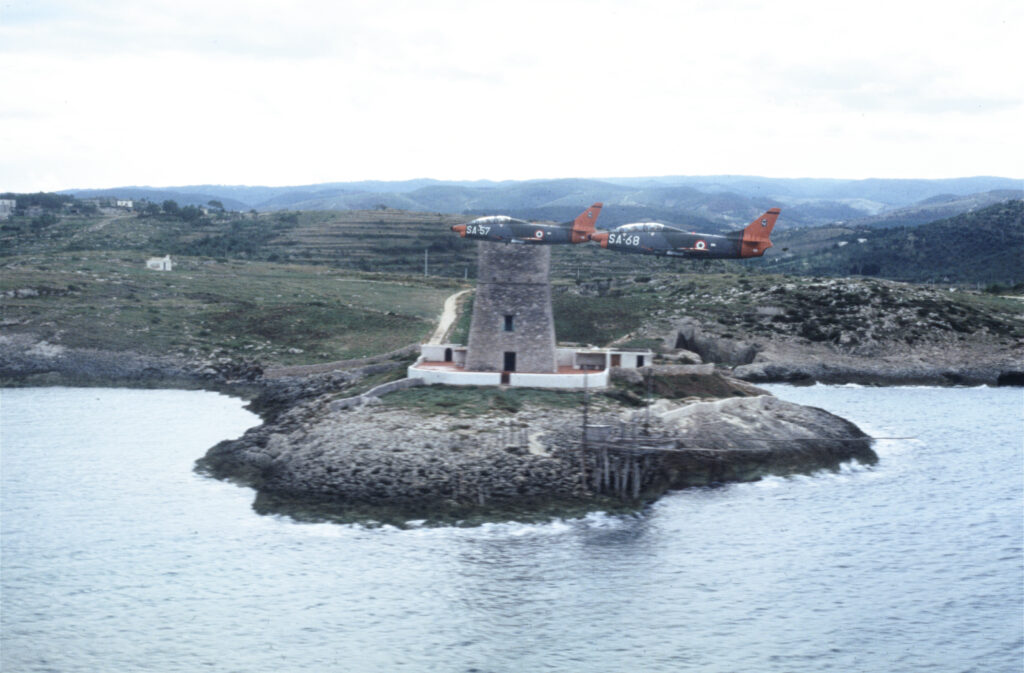
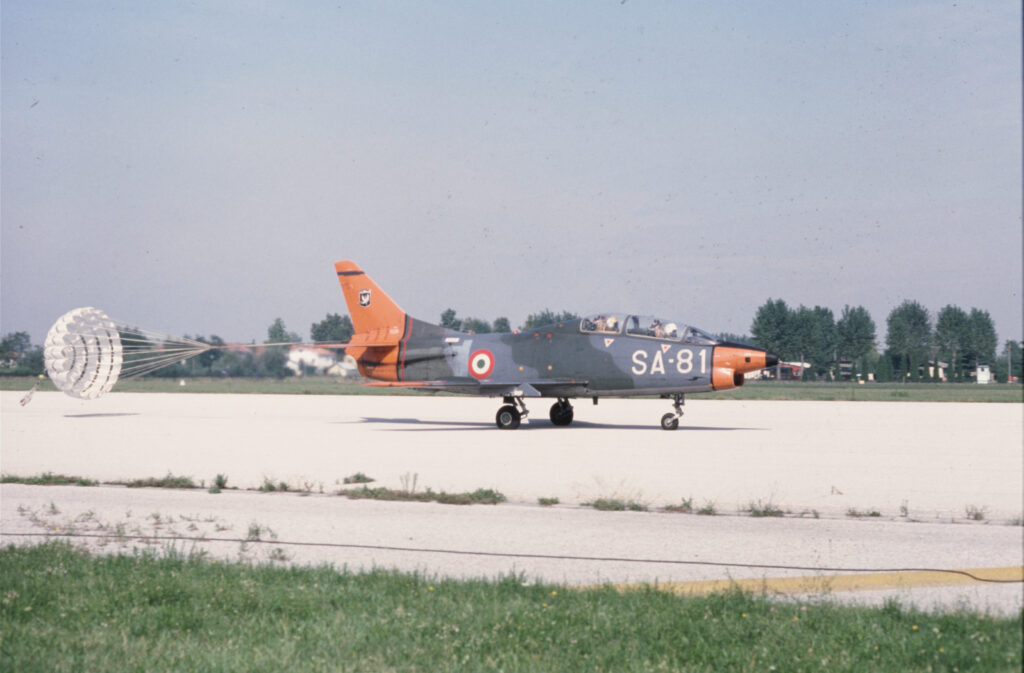
G.91T / 1 of the SVBAA taxiing with the brake parachute extended.
(Photo Troupe Azzurra – Via Gigi IACOMINO)
A pair of SVBAA G.91T / 1s flying along the Adriatic coast.
(Photo Troupe Azzurra – Via Gigi IACOMINO)
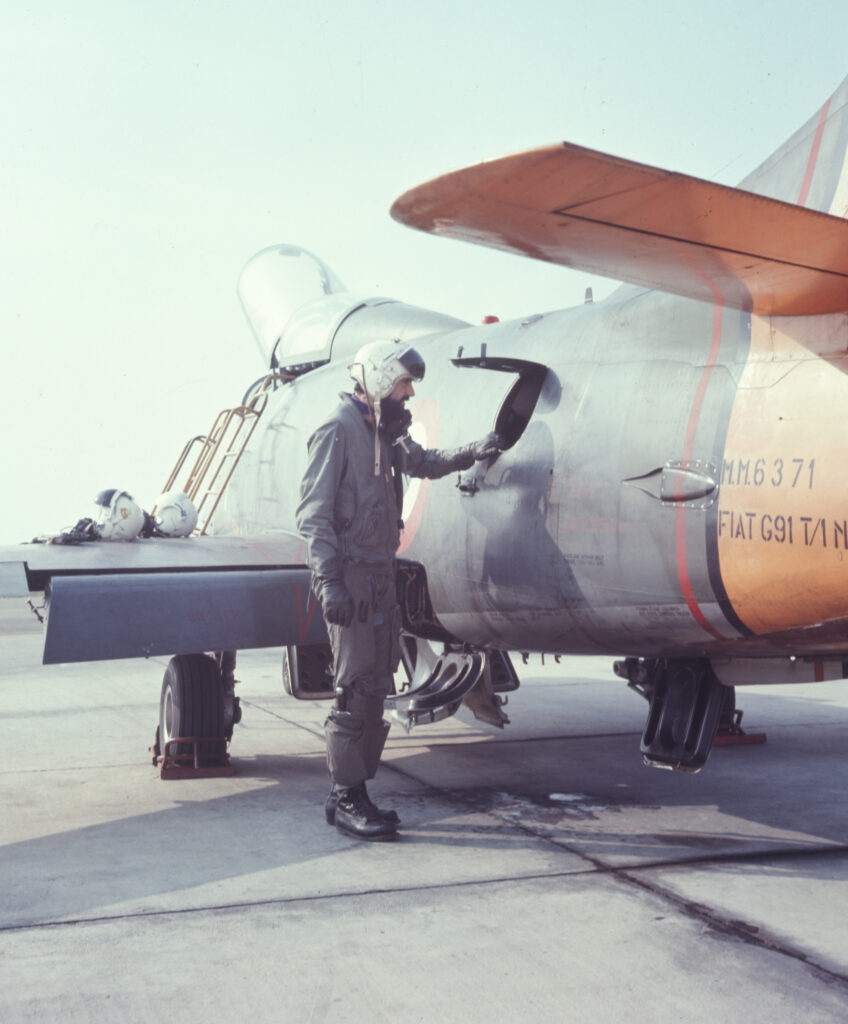
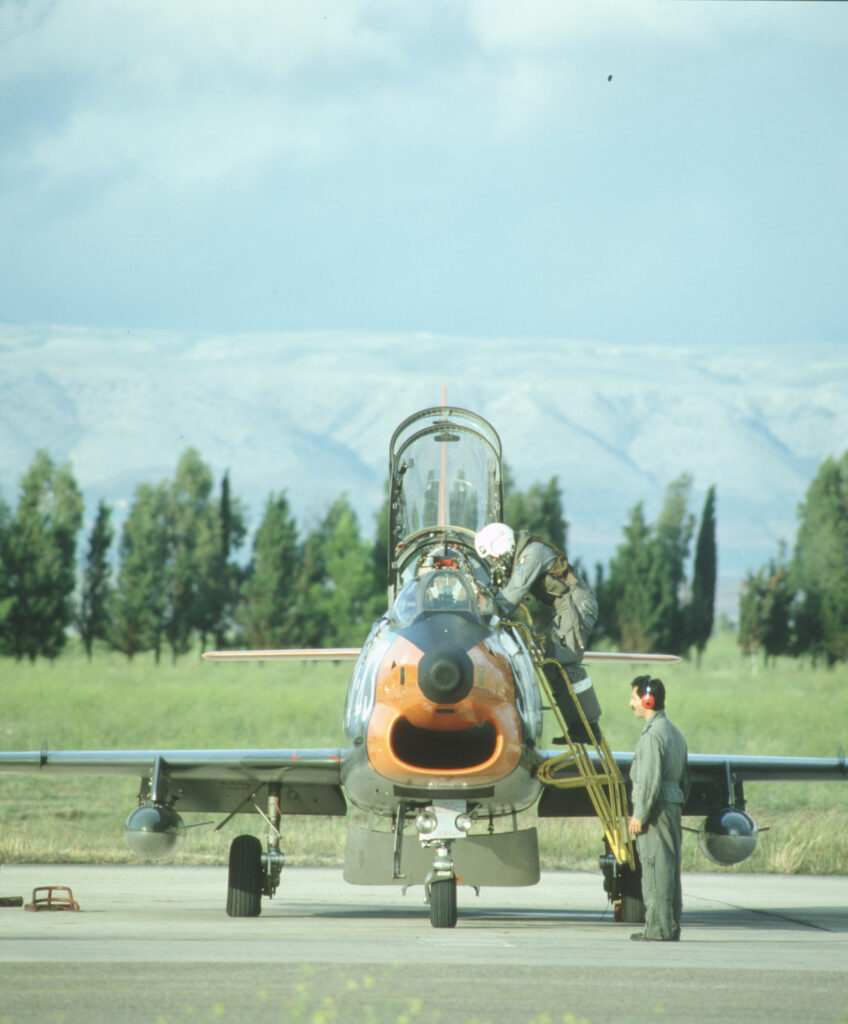
Pre-flight checks on a SVBAA G.91T / 1.
(Photo Troupe Azzurra)
(Via Gigi IACOMINO)
A pilot student of the SVBAA , photographed as he prepares to get on board a school G.91T / 1.
(Photo Troupe Azzurra – Via Gigi IACOMINO)
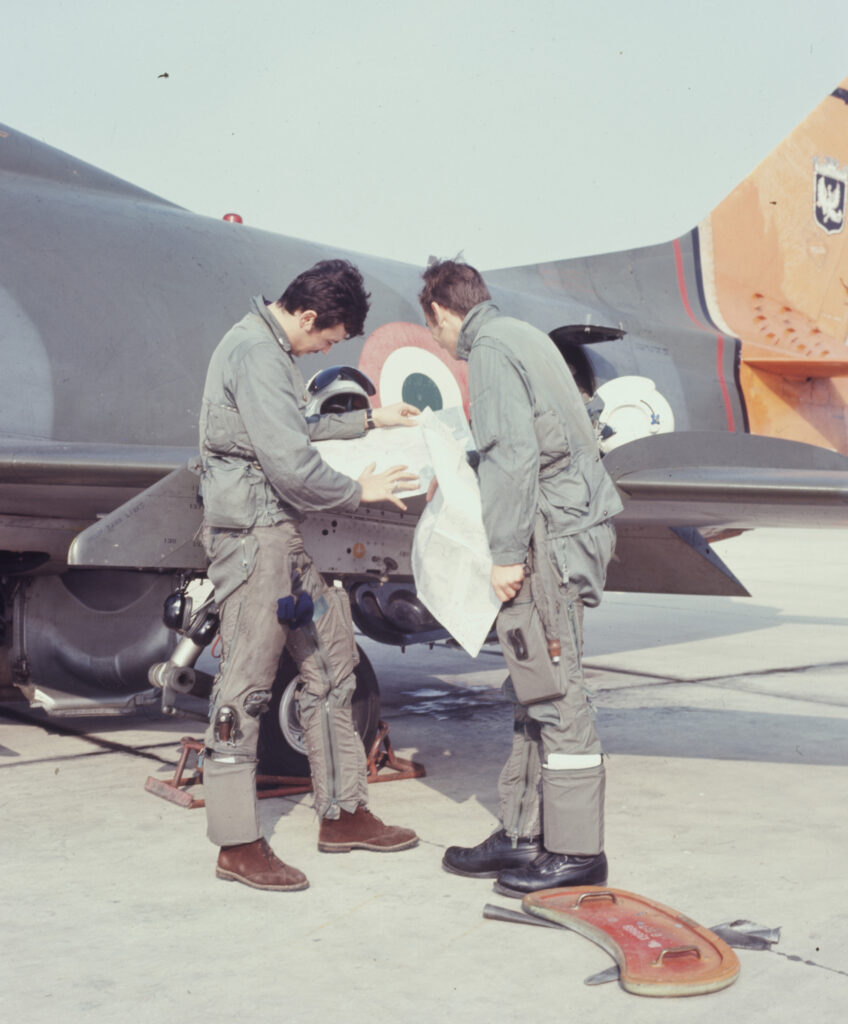
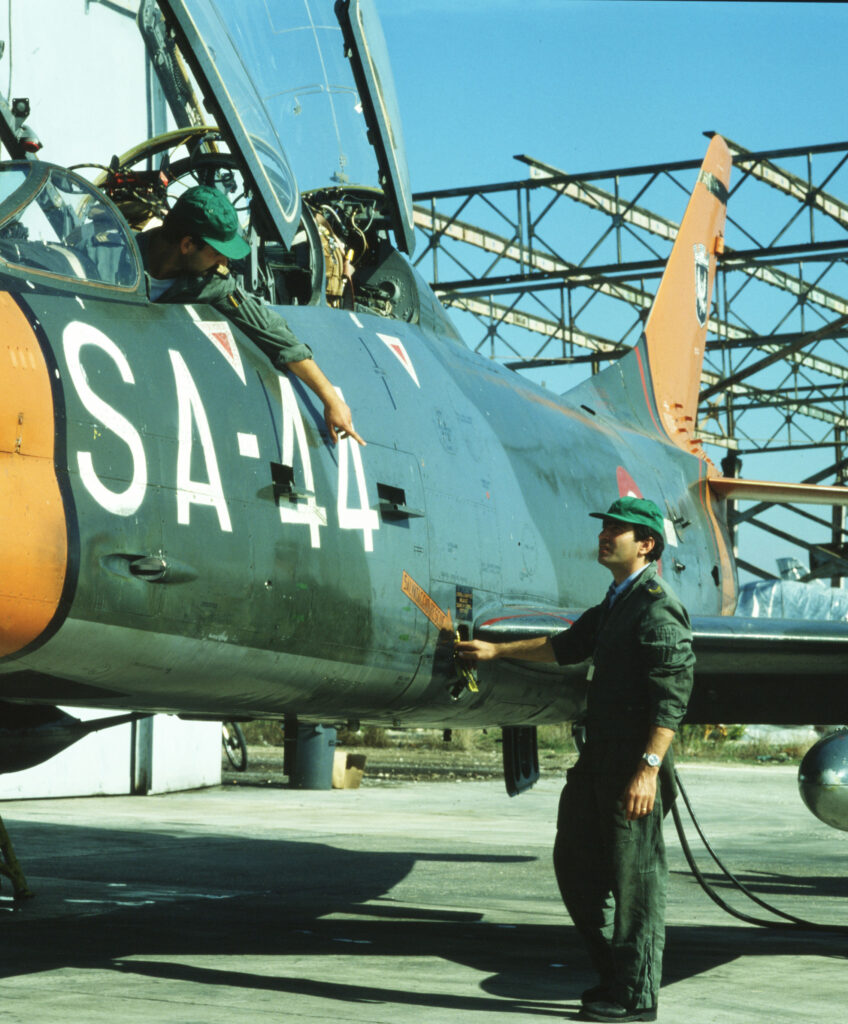
Student and instructor of the SVBAA carry out the last checks of the flight plan.
(Photo Troupe Azzurra – Via Gigi IACOMINO)
SVBAA specialists check a G.91T / 1.
(Photo Troupe Azzurra)
( Via Gigi IACOMINO)
Designed by Gabrielli to meet an Air Force specification for an advanced training jet, the new aircraft featured a wider and longer fuselage of 1.40 meters, with a higher tail plane and redesigned bogie compartments. This trainer was made in Italy in 75 copies (G.91T / 1) by FIAT on behalf of the Air Force while, in West Germany, under license, by the company Flugzeug-Union Süd. It was a consortium of historic manufacturing companies which included Messerschmitt, Heinkel and Dornier.
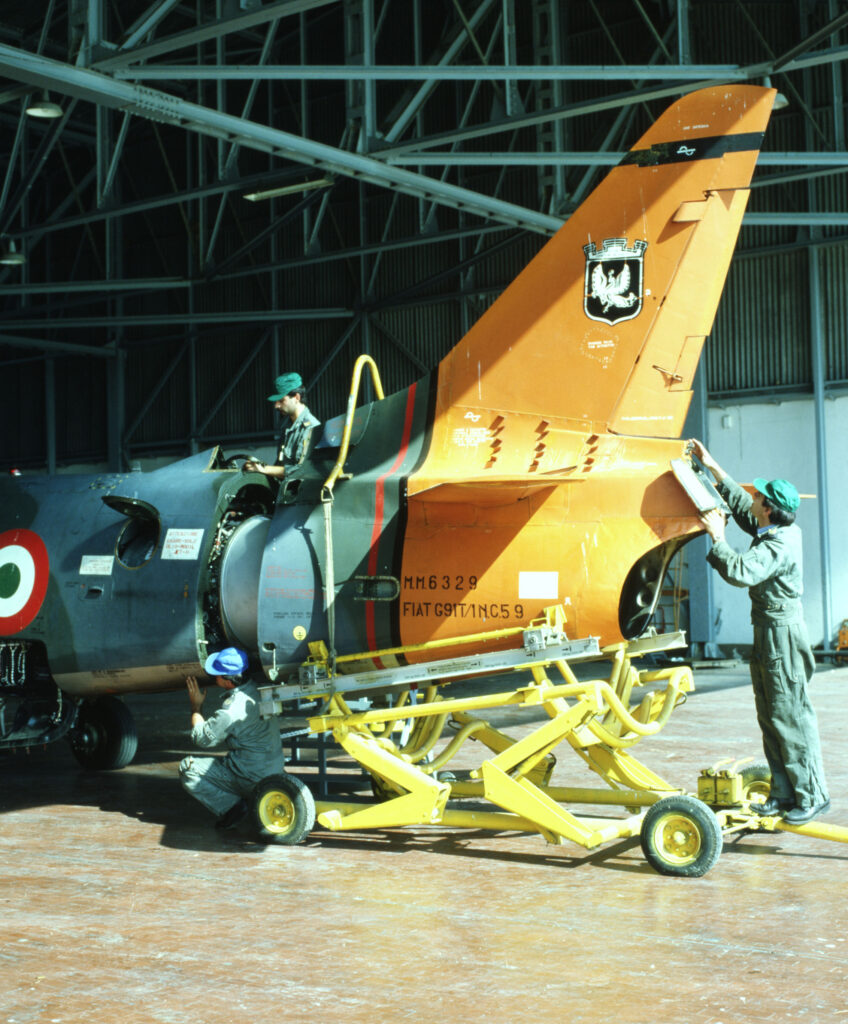
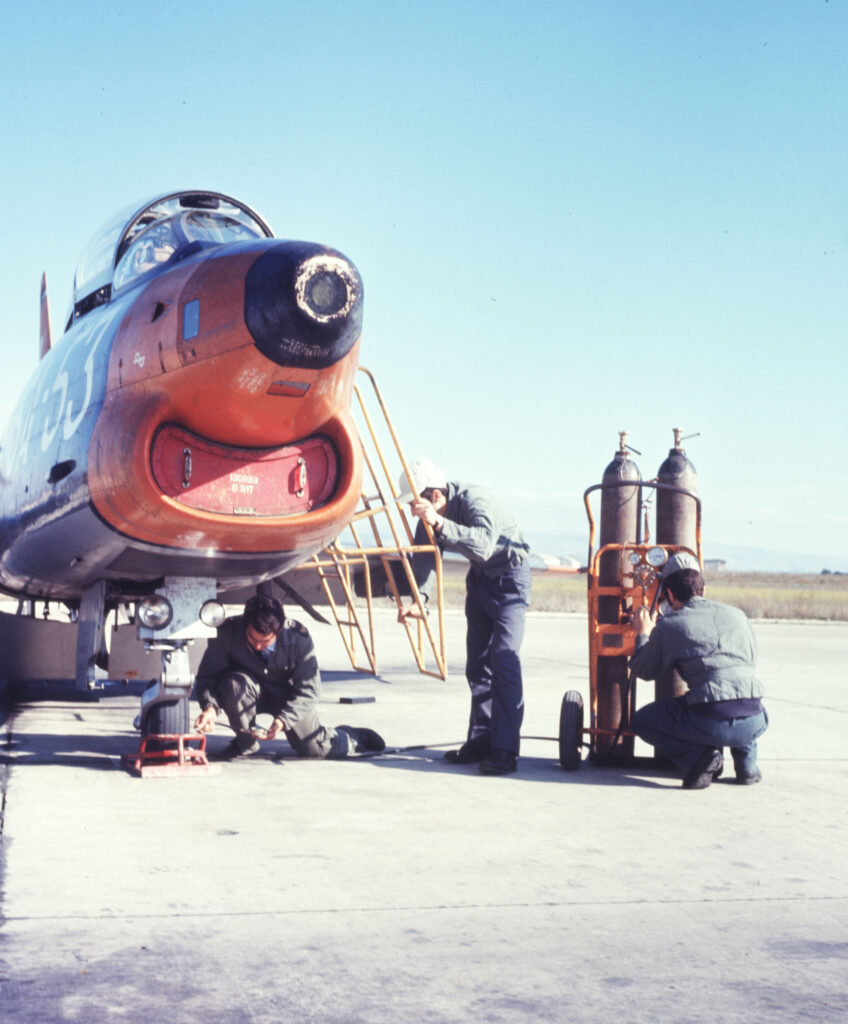
Removal of the tail of a SVBAA G.91T / 1. (Photo Troupe Azzurra – Via Gigi IACOMINO)
SVBAA specialists working on a school aircraft.
(Photo Troupe Azzurra – Via Gigi IACOMINO)
The G.91T produced for the Luftwaffe, in which the aircraft was affectionately called Gina, were made in two versions: G.91T / 3 (44 specimens), similar to the T / 1, but equipped with four wing attachment points instead of two , and 11 of which were sold to the Força Aérea Portugues in 1976; and the T / 4 version which, however, was modified in the navigation and detection part with the equipment mounted on Lockheed F-104G Starfighter aircraft.
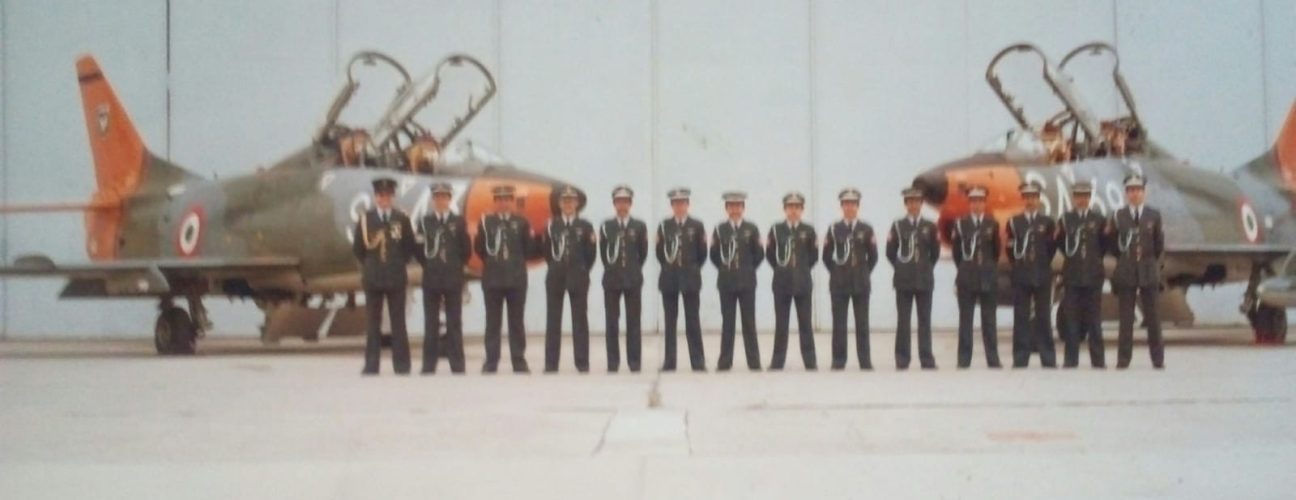
SVBAA of Foggia-Amendola, early 1980s. Students of the Iraqi Air Force, pose for a souvenir photo at the end of the course carried out on the school G.91T / 1.
(Coll. Gigi IACOMINO)
Entered in line from 15 November 1964, at the Aviogetti Advanced Basic Flight School (SVBAA) of Foggia-Amendola, then constituted by the 201 °, 204 ° and 205 ° Group, the G.91T / 1 was replacing the previous jet Lockheed T.33A training equipment provided by the United States on MDAP account during the 1950s. Compared to the American trainer, Gabrielli’s aircraft was more advanced, having, in addition to an arrow wing, also more complete equipment ranging from instrumentation to armament up to the cameras installed in the nose, which allowed him a better and wider training capacity of pilot students.
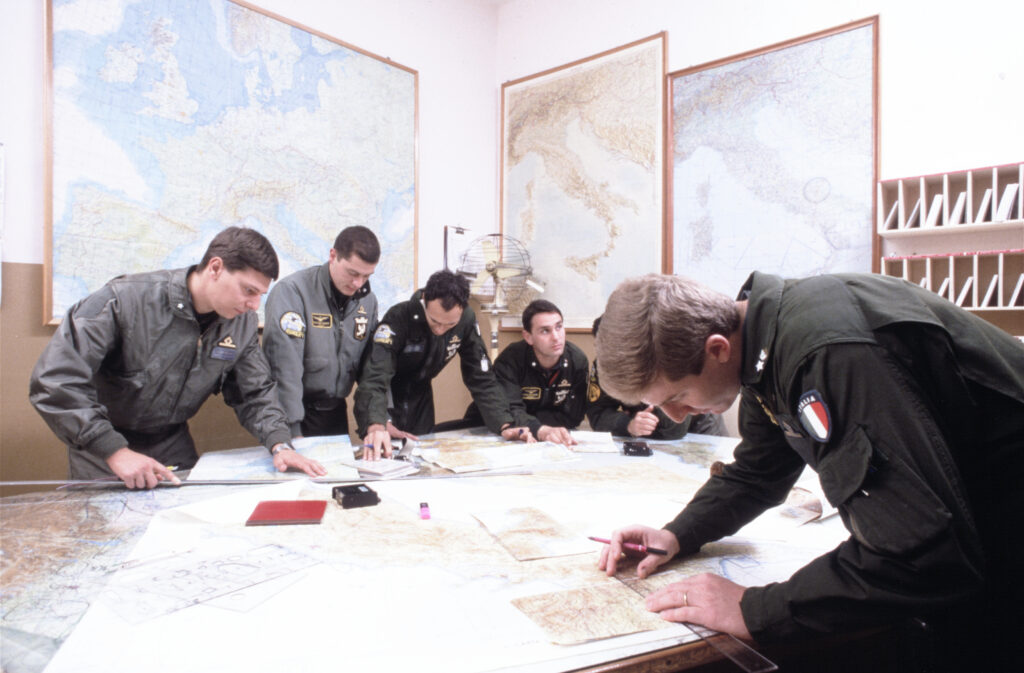
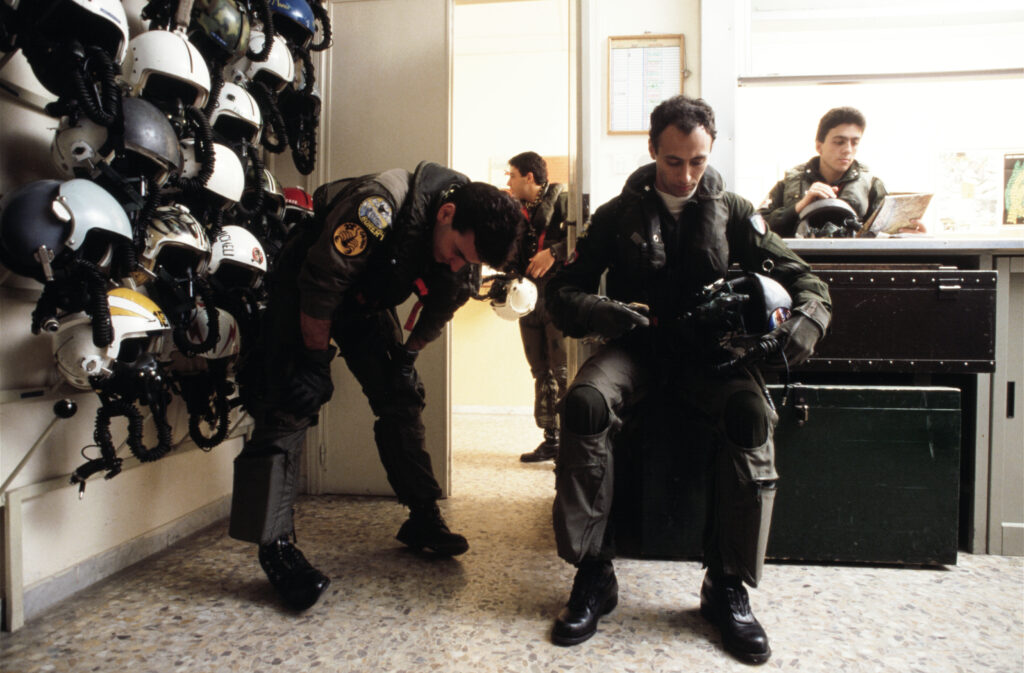
Pilot students of the 60th Air Brigade, in the navigation room.
(Photo Troupe Azzurra – Via Gigi IACOMINO)
Pilot students of the 60th Air Brigade, in the
dressing room.
(Photo Troupe Azzurra – Via Gigi IACOMINO)
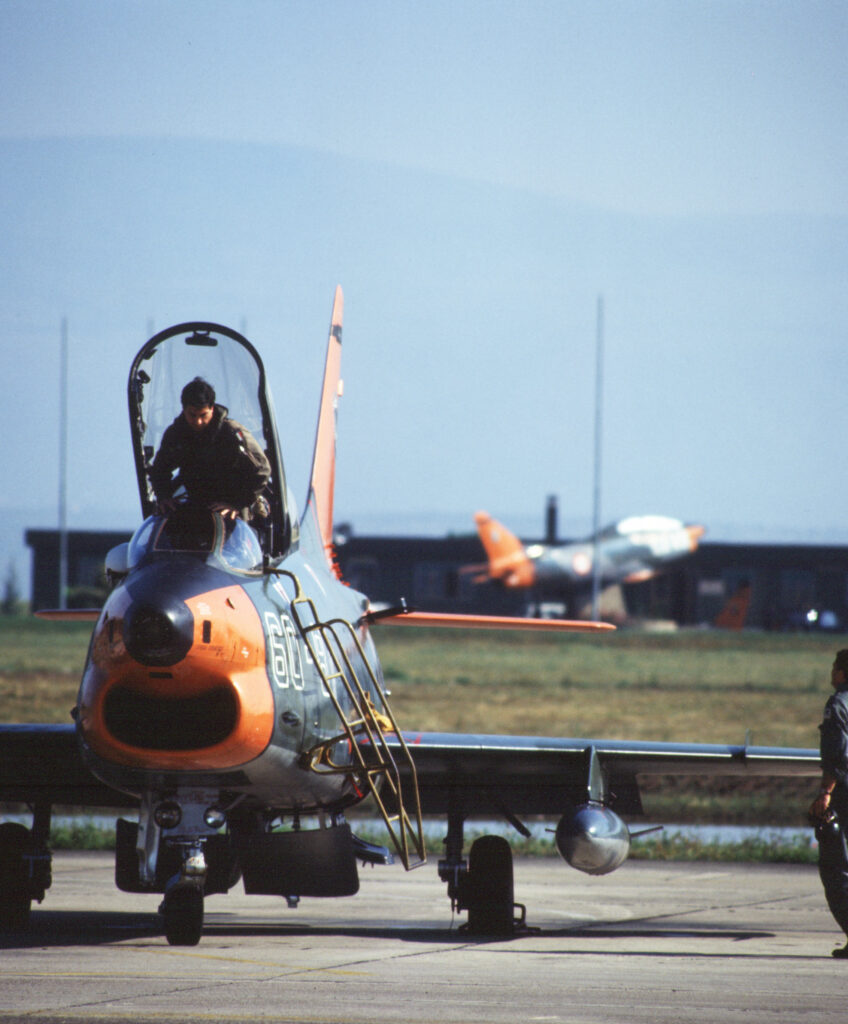
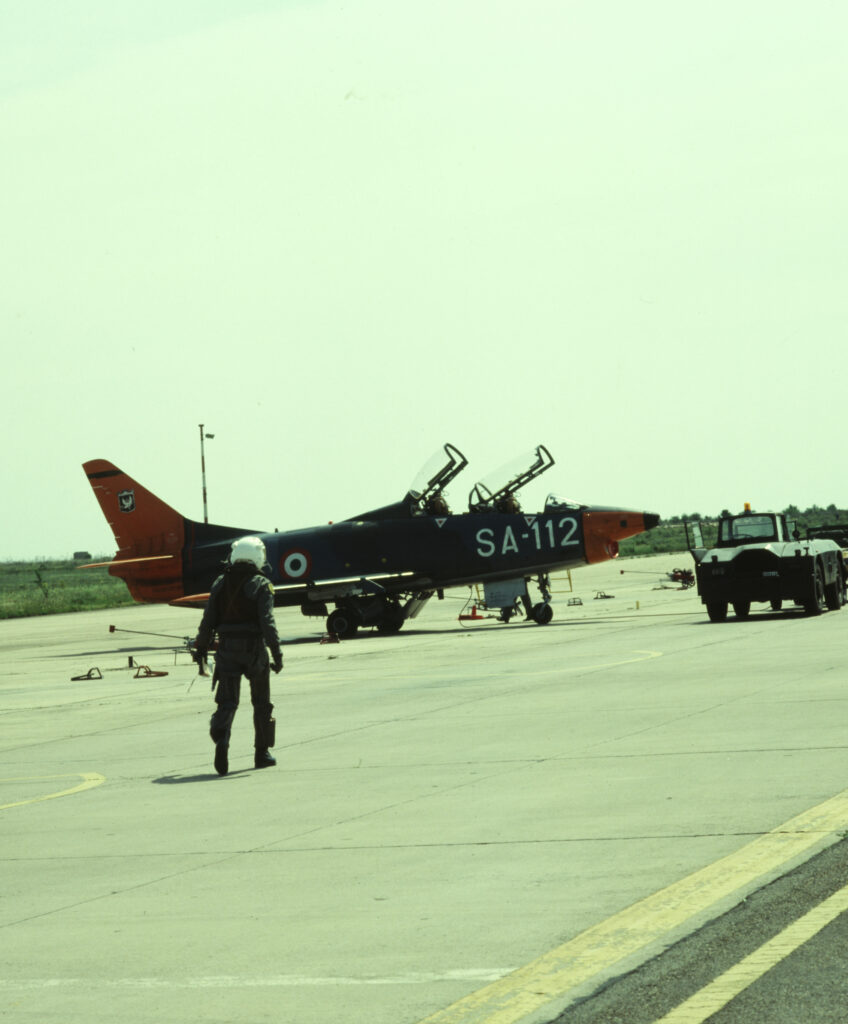
A pilot student, photographed during the training activity. In the background is visible the G.91T / 1 positioned in front of the command of the Amendola.
(Photo Troupe Azzurra – Via Gigi IACOMINO)
Amendola, early 80s. A pilot student moves towards the aircraft with which he will carry out his training mission.
(Photo Troupe Azzurra – Via Gigi IACOMINO)
Less than a year later, the FIAT trainer had completely replaced the SVBAA T.33As which, consequently, went to equip other Air Force specialization schools and connecting squadrons. Less inclined than the T.33A to forgive any piloting errors, the G.91T / 1, due to its flight characteristics, proved to be the ideal aircraft for the transition of student pilots on more powerful machines such as the Lockheed F104G / S Starfighter and MRCA Tornado.
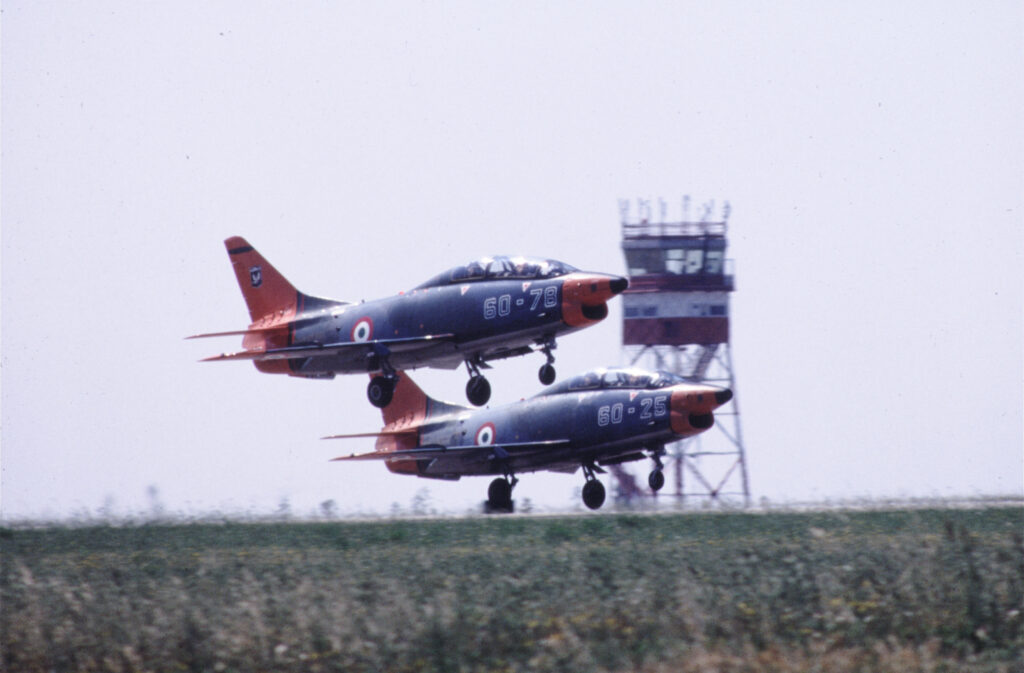
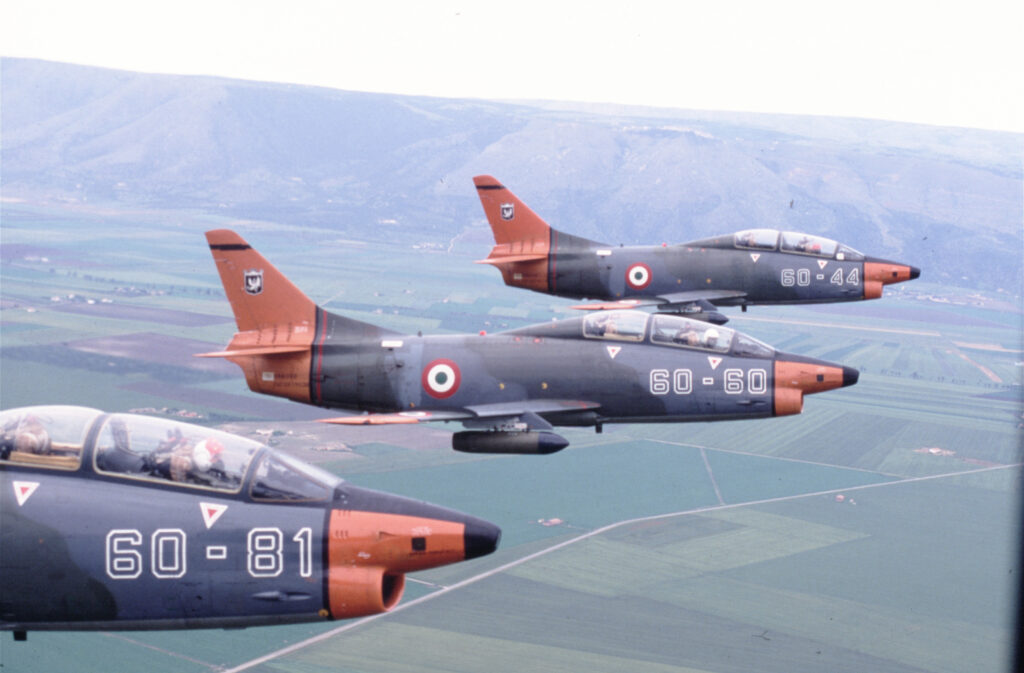
Landing of a pair of G.91T / 1 of the 60th Air Brigade.
(Photo Troupe Azzurra)
(Via Gigi IACOMINO)
A formation of G.91T / 1, armed with air-to-ground rocket launchers.
(Photo Troupe Azzurra – Via Gigi IACOMINO)
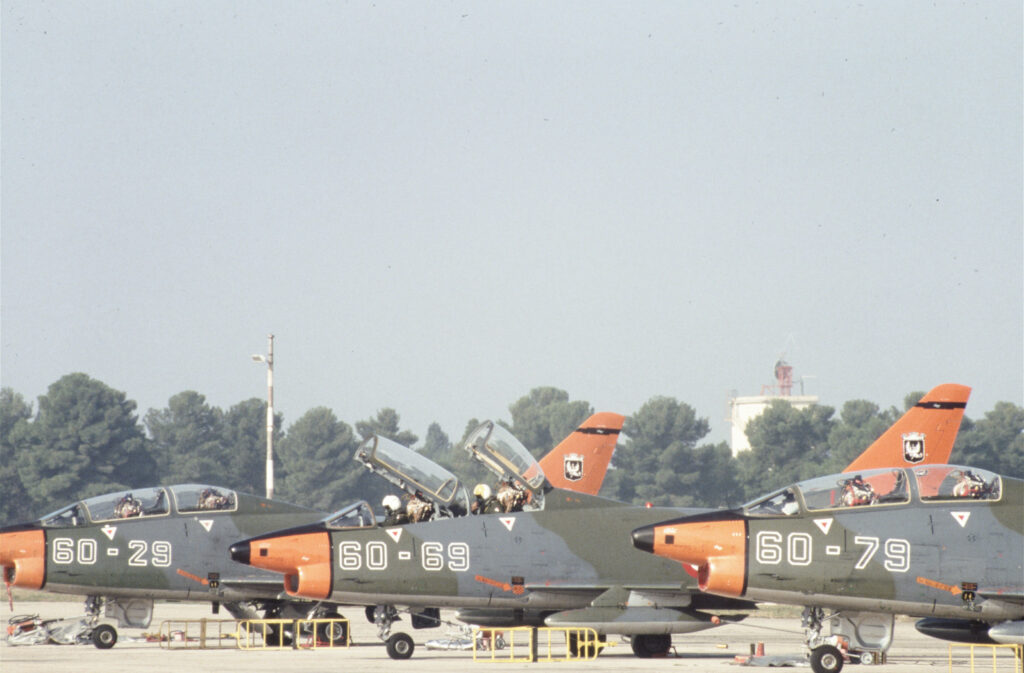
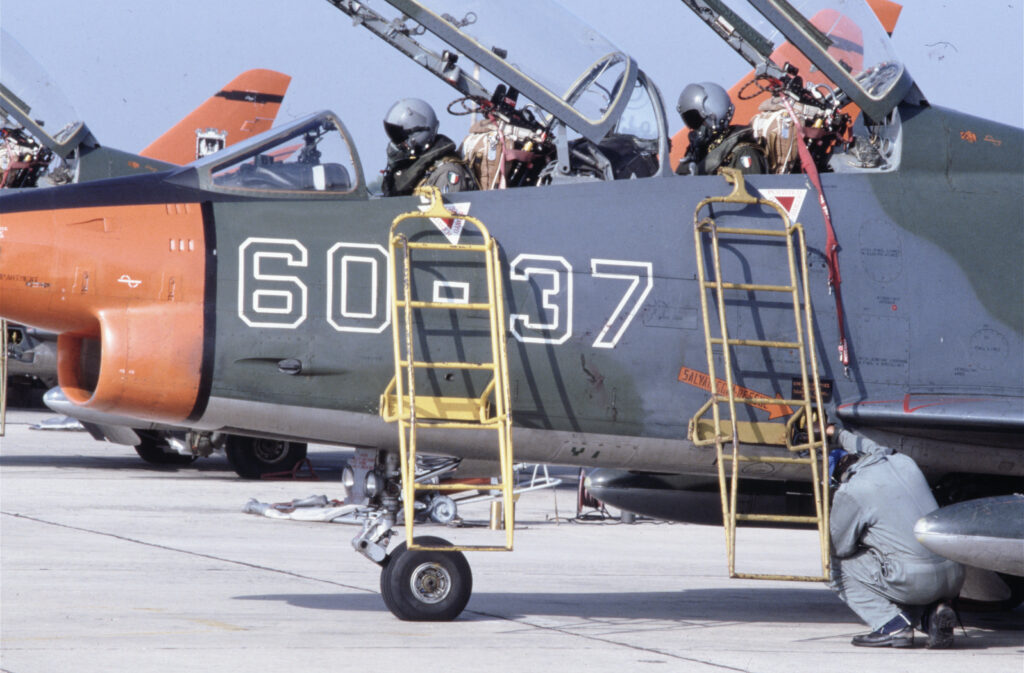
Last pre-flight checks, for a G.91T / 1 of the 60th Air Brigade.
(Photo Troupe Azzurra – Via Gigi IACOMINO)
A specialist of the 60th Air Brigade removes the access ladder of a G.91T / 1
(Photo Troupe Azzurra – Via Gigi IACOMINO)
Due to his skills as a trainer, the flight behavior, the selectivity and the feeling he transmitted to students and instructors, a couple of affectionate nicknames were affixed to G.91T / 1: that of “T”, and the least usual ” Virus”; the latter (certainly the best known), because, as one of his pilots said: it was an aircraft of those that “took you” and you never forgot!
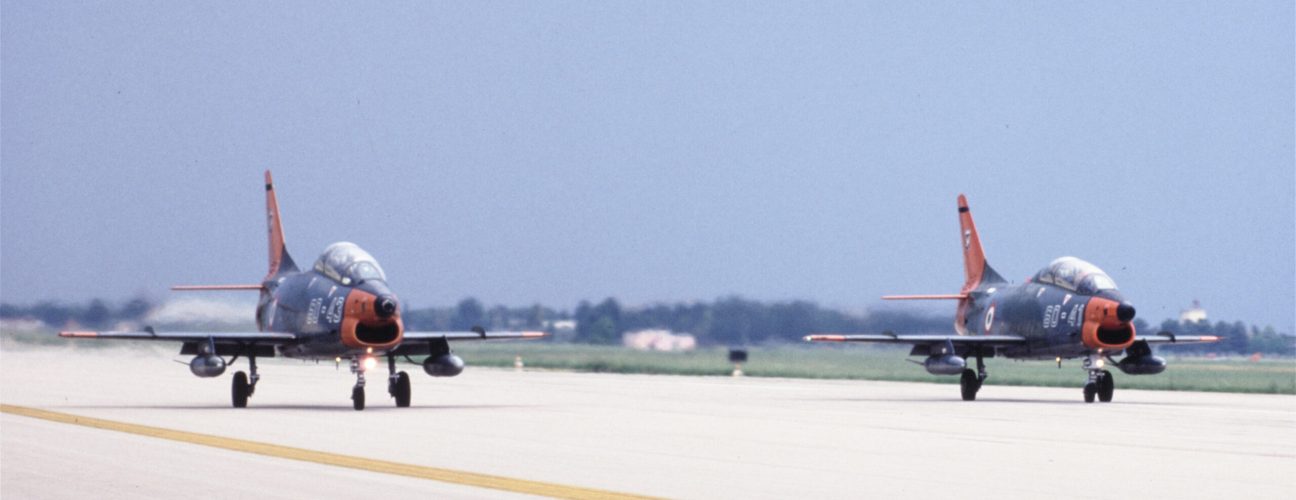
A pair of G.91T / 1 taxiing along the Amendola runway. (Photo Troupe Azzurra – Via Gigi IACOMINO)
During its thirty years of activity, the G.91T / 1 patented 1,250 Italian and foreign student pilots, while 2,650 pilots attended various courses on it for a total of 289,000 flight hours.
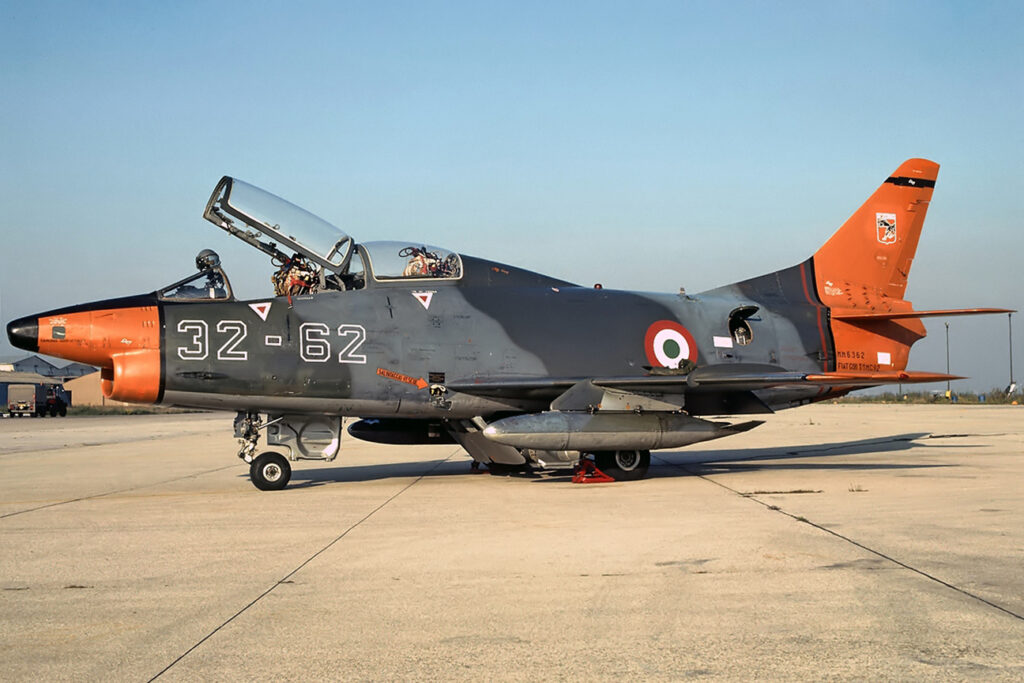

A G.91T / 1 with the high visibility insignia of the 32nd Wing. (Coll. Gigi Iacomino)
Amendola Airport, 1994. A G.91T / 1 parked near the flight line. (Coll. Gigi IACOMINO)
After the transition into the 60th Air Brigade and, subsequently, in the 32nd Wing, the G.91T / 1 made the last flight during a solemn ceremony held on the Amendola air base on 30 September 1995.
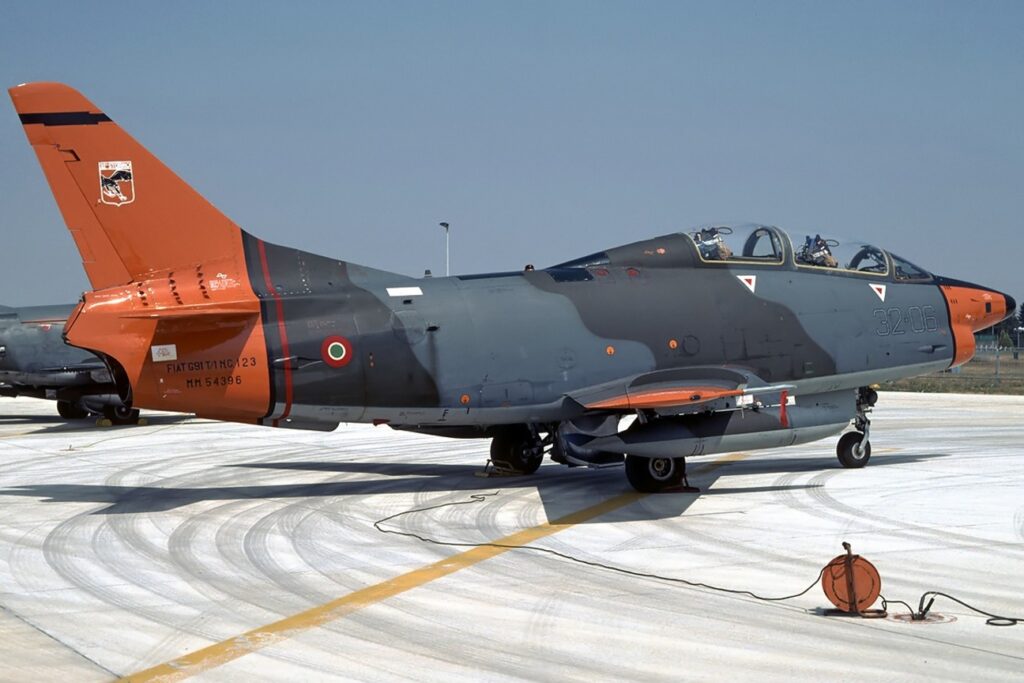
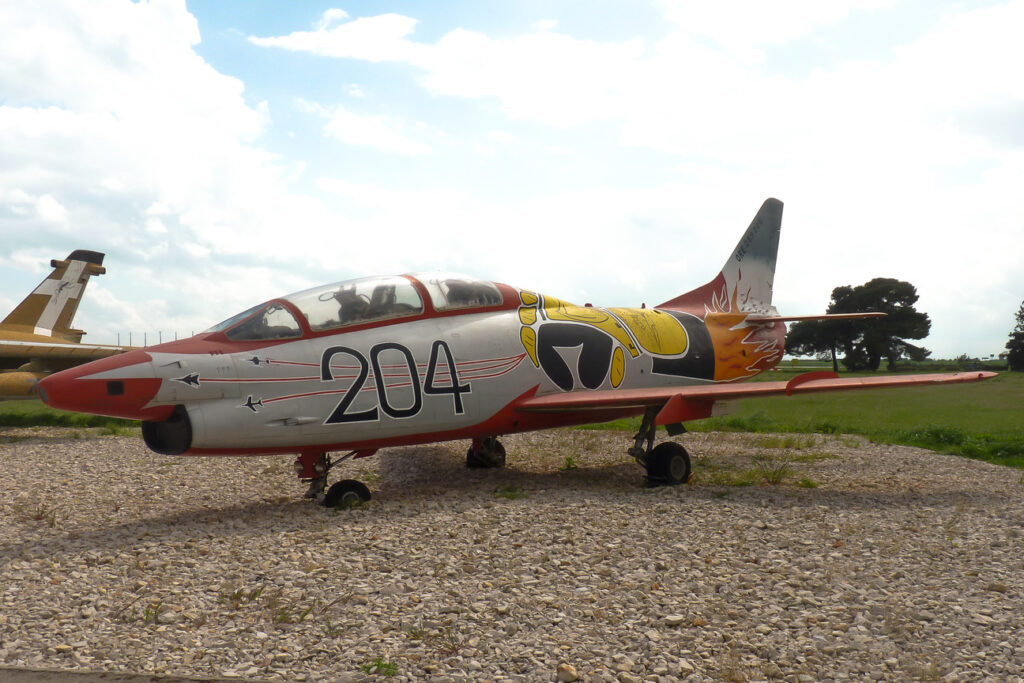
A G.91T / 1 with the new low visibility signs of the 32nd flock.
(Coll. Gigi IACOMINO)
FIAT G.91T / 1 Special Color “La Fenice”.
(Photo Dario Da Roit)
Fiat G-91T/1 32° Wing "Armando Boetto" Amendola 1992

TECHNICAL FEATURES
Engine: a Bristol Siddeley Orpheus 801/02 turbojet. Wingspan: 8.60 m. Length: 11.70 m. Height: 4.45 m. Wing area: 16.40 m2. Empty weight: 3,300 kg. Total weight: 5.350 kg. Maximum speed: 1,080 km / h. Ascent to 8,000 m .: 6 ’40″. Tangency: 13,000 m. Autonomy: 2.300 km. Armament: 2 Colt-Browning 12.7mm machine guns + training bombs and three Vinten F-95 Mk.3 cameras.
Pilot Report Fiat G.91T/ The Col. Pil. Michele Renzullo
